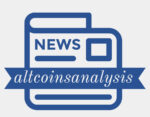Stablecoins like USDT, USDC dominate 90% of Brazil’s crypto transactions as users hedge against real’s volatility, inflation. Stablecoins streamline remittances, daily payments; fintech platforms simplify access amid Brazil’s digital payment infrastructure growth. Nine out of every ten cryptocurrency transactions in Brazil now involve stablecoins, according to recent industry reports. Assets like Tether (USDT), USD Coin (USDC), and DAI account for 90% of the country’s crypto trading volume, outpacing Bitcoin and other cryptocurrencies. Stablecoins, which peg their value to stable assets like the U.S. dollar, serve multiple roles. Individuals use them to shield savings from the real’s volatility, while businesses leverage them for cross-border payments to avoid traditional banking fees. Remittances, a lifeline for many families, also benefit: transfers using stablecoins settle faster and cost less than conventional methods. Denise Cinelli, COO of Brazilian exchange CryptoMKT, notes, “Users prioritize speed and predictability. Stablecoins meet these needs in ways volatile cryptocurrencies cannot.” Three factors explain this trend. First, Brazil’s inflation rate, though easing, remains a concern. Stablecoins offer a hedge against the real’s purchasing power erosion. Second, fintech platforms and crypto exchanges have simplified access. Companies like CryptoMKT enable users to buy, sell, and store stablecoins with minimal friction, even for those without bank accounts. Third, Brazil’s digital payment infrastructure—bolstered by apps like Pix—has primed users for blockchain-based alternatives. Brazil’s Central Bank has begun drafting rules to govern stablecoins, aiming to ensure transparency and consumer protection. Proposed measures include reserve audits for issuers and anti-fraud safeguards. CryptoMKT and other exchanges are collaborating with authorities to align operations with emerging standards, though specifics remain under discussion. The shift toward stablecoins reflects broader financial changes in Brazil Over 40% of adults lack full access to banking services, per World Bank data. Stablecoins fill gaps by enabling savings and transactions without traditional intermediaries. This utility extends to small businesses, which use them to manage international suppliers and bypass costly currency conversions. While adoption grows, challenges persist. Stablecoin reliance exposes users to U.S. monetary policy shifts, as most are dollar-pegged. Others raise concerns about centralization, given issuers like Tether control reserves. Still, Brazil’s market shows no signs of slowing. ETHNews analysts predict stablecoins will anchor the country’s digital economy as fintech partnerships expand and regulations formalize. For now, Brazil’s embrace of stablecoins underscores a pragmatic approach to financial innovation—one balancing opportunity with caution. The post Brazil’s Central Bank Eyes Rules as Stablecoin Use So in a formal or creative style, maintaining a 500 word count. You must only respond with the modified content. Change the tone of my title “Stablecoins like USDT, USDC dominate 90% of Brazil’s crypto transactions as users hedge against real’s volatility, inflation. Stablecoins streamline remittances, daily payments; fintech platforms simplify access amid Brazil’s digital payment infrastructure growth. Nine out of every ten cryptocurrency transactions in Brazil now involve stablecoins, according to recent industry reports. Assets like Tether (USDT), USD Coin (USDC), and DAI account for 90% of the country’s crypto trading volume, outpacing Bitcoin and other cryptocurrencies. Stablecoins, which peg their value to stable assets like the U.S. dollar, serve multiple roles. Individuals use them to shield savings from the real’s volatility, while businesses leverage them for cross-border payments to avoid traditional banking fees. Remittances, a lifeline for many families, also benefit: transfers using stablecoins settle faster and cost less than conventional methods. Denise Cinelli, COO of Brazilian exchange CryptoMKT, notes, “Users prioritize speed and predictability. Stablecoins meet these needs in ways volatile cryptocurrencies cannot.” Three factors explain this trend. First, Brazil’s inflation rate, though easing, remains a concern. Stablecoins offer a hedge against the real’s purchasing power erosion. Second, fintech platforms and crypto exchanges have simplified access. Companies like CryptoMKT enable users to buy, sell, and store stablecoins with minimal friction, even for those without bank accounts. Third, Brazil’s digital payment infrastructure—bolstered by apps like Pix—has primed users for blockchain-based alternatives. Brazil’s Central Bank has begun drafting rules to govern stablecoins, aiming to ensure transparency and consumer protection. Proposed measures include reserve audits for issuers and anti-fraud safeguards. CryptoMKT and other exchanges are collaborating with authorities to align operations with emerging standards, though specifics remain under discussion. The shift toward stablecoins reflects broader financial changes in Brazil Over 40% of adults lack full access to banking services, per World Bank data. Stablecoins fill gaps by enabling savings and transactions without traditional intermediaries. This utility extends to small businesses, which use them to manage international suppliers and bypass costly currency conversions. While adoption grows, challenges persist. Stablecoin reliance exposes users to U.S. monetary policy shifts, as most are dollar-pegged. Others raise concerns about centralization, given issuers like Tether control reserves. Still, Brazil’s market shows no signs of slowing. ETHNews analysts predict stablecoins will anchor the country’s digital economy as fintech partnerships expand and regulations formalize. For now, Brazil’s embrace of stablecoins underscores a pragmatic approach to financial innovation—one balancing opportunity with caution. The post Brazil’s Central Bank Eyes Rules as Stablecoin Use So” for a more friendly approach. Keep the content length about the same. You must only respond with the modified content.




